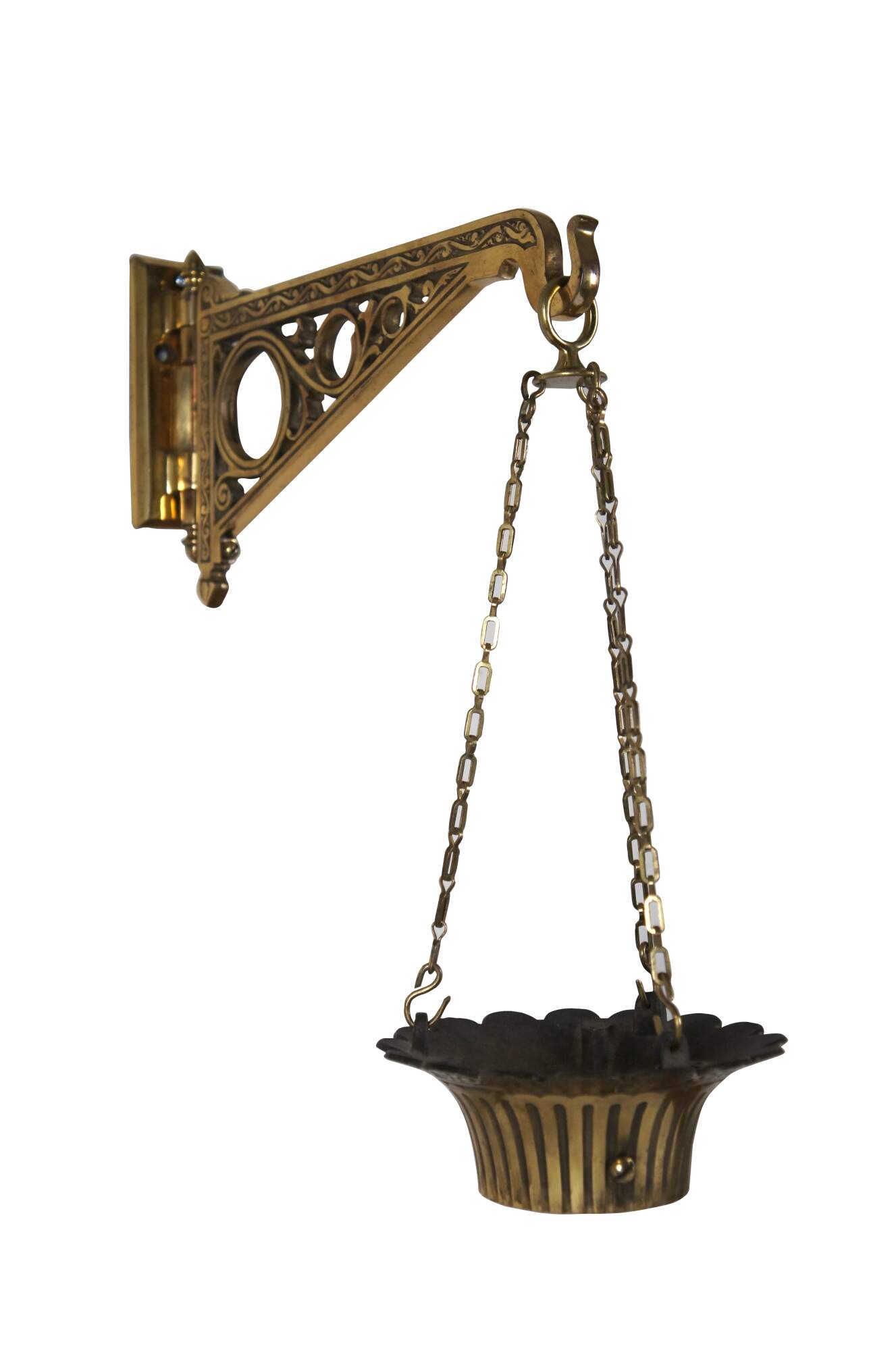
Shipping:
Free Shipping Included
Delivery:
Estimated 2-15 Business Days
Payments:
Credit Card, Check, Cash, PayPal, Apple Pay, Venmo
Returns:
30 Days 100% Money Back Guarantee, Buyer Pays Return Shipping
Description
Late 19th - early 20th century solid brass, articulated / rotating wall bracket, chains, and collar for a pharmacist's / apothecary show globe. Bracket features etched and pierced swirling foliate designs and acorn shaped finials on the hinge. Hinge allows bracket to be rotated 180 degrees. Collar is fluted with flared, scalloped mouth trimmed with a scrolled leaf pattern. Two screws would support the suspended glass lantern / globe.
"Show globes, or carboys, are typically clear glass vessels filled with colored liquid and displayed in an apothecary's window. In addition to its colorful liquid, many owners used silver spheres or mirrors to reflect light onto the globes. In its most basic form, a show globe is a single glass vessel with a stopper, but throughout their existence, manufacturers and apothecaries have developed many variations to show their originality. Most commonly, they are made of plain glass, but etched designs or various cuts such as punty or quilted can be found, which gives the glass more depth and shine when illuminated. The neck of the globe, which holds the stopper, may be a short "stumpy" version, while others may have a long "swan" neck. Although many sizes were made with respect to the position in the window display, the typical show globe is one-half to two gallons in size. Many globes have two tiers, with one globe and one stopper as a tier each; however, some show globes have multiple stoppers with each tier tapering towards the top. Single and double towered globes were found in around the world, but triple towered globes were predominantly found in the United States. Another way to show off the apothecary's originality was how the show globe was exhibited. Some were suspended from the wall or ceiling using iron brackets for support, and others were free-standing, presented on decorative wooden, iron, or glass pedestals. Some apothecaries even covered the street lamps outside of the business with colored panes and the word "chemist" to attract customers. These colorful show globes were common place in English nations by the eighteenth century, because there were published directions on how to prepare the colors to fill these popular globes. By the beginning of the nineteenth century, British pharmacies displayed carboys in their shop front windows sometimes as their sole window décor, as depicted on trade cards from London and Leamington. Later, show globes expanded their role and became a symbol of "druggists and chemists" on their signs and advertisements. By 1789, show globes were exported to the United States, as publicized in New York advertisements, followed soon after by Canada, Australia, and New Zealand. As the show globes grew in popularity in several countries, they became a well-recognized symbol of not only a place to obtain pharmaceutical supplies or remedies but also of the pharmacy profession itself. In the twentieth century, with the evolution of pharmacy, these decorative symbols were replaced with advertisements and merchandise. In a 1931 edition of American Druggist, one author warned the pharmacy community that a symbol of the profession was becoming extinct and implored pharmacists to regain this symbol by proudly displaying show globes once again. Following the publication of this article, the Owens Illinois Glass Company introduced a new style and began a renewed interested in show globes. They continued production until 1965, and again, show globes slowly disappeared from pharmacy windows." (Source: Waring Historical Library)
Condition
Good Overall - Missing globe; tarnish/gentle wear
Dimensions
Bracket - 2.5" x 15" x 8" / Lantern Collar - 7.5" x 3" / Lower Opening - 3.5" / Chain Length - 14.25"